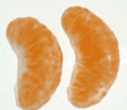In a current evaluate printed in Sign Transduction and Focused Remedy, researchers offered recombinant adeno-associated virus (rAAV)-based genetic functions to deal with human ailments.
 Research: Adeno-associated virus as a supply vector for gene remedy of human ailments. Picture Credit score: Gorodenkoff/Shutterstock.com
Research: Adeno-associated virus as a supply vector for gene remedy of human ailments. Picture Credit score: Gorodenkoff/Shutterstock.com
Background
Adeno-associated virus (AAV) is a vital element of medical gene remedy because of its low pathogenicity and capability to generate long-term gene expression in numerous tissues. Recombinant AAV (rAAV) is designed to extend specificity and might treatment a number of diseases.
Nevertheless, issues persist regarding the security of high-dose viral remedy in folks, in addition to immune responses and unintended effects. Researchers want AAV vectors because of their broad tissue tropism, excessive security profile, and flexibility in manufacturing procedures.
In regards to the evaluate
Within the current evaluate, researchers explored AAV-vectored genetic remedy of human problems.
Recombinant AAV biology, improvement, and manufacturing
AAV-1, 4, and seven,8 originate from non-human primates (NHP), whereas AAV-2, 3, 5, 6, and 9 originate from people. Main receptors for mobile attachment embrace N-linked sialic acid, O-linked sialic acid, HSPG, and galactose.
Co-receptors for mobile attachment embrace fibroblast development issue receptor 1 (FGFR1), hepatocyte development issue receptor (HGFR), laminin receptor (LamR), a cluster of differentiation 9 (CD9), tetraspanin, platelet-derived development issue receptor (PDGFR), and epidermal development issue receptor (EGFR).
Receptors for post-attachment for AAVs embrace the adeno-associated virus receptor (AAVR) and G protein-coupled receptor 108 (GPR108).
AAVs localize within the skeletal muscle, central nervous system (CNS), lungs, retina, liver, pancreas, kidney, and coronary heart.
Pure AAV mutants are remoted from non-human primates and people utilizing high-cycle polymerase chain response (PCR) with high-throughput genetic sequencing. Rational design entails altering amino acid molecules in AAV capsids to spice up transduction capabilities or elude immune surveillance.
The directed evolution engineering technique is used to create distinctive AAV variations with specificity. In silico methods, generally known as AAV capsid sequences, they’re used to rebuild ancestral sequences of the virus.
Machine studying makes use of mutagenized AAV-transduced information to foretell the hyperlink between AAV genome sequences, packing capacities, and web site tropism.
Viral an infection and transfection platforms are primarily used to fabricate rAAVs. Plasmid short-term transfection of the human embryonic kidney 293 (HEK293) cell traces continues to be essentially the most typically used method; nevertheless, secure mobile traces and techniques utilizing baculovirus (BV) or herpes simplex virus (HSV) present scalable choices for scalable manufacturing.
TESSA, a transfection-free system of helper viruses, was designed to generate high-yield recombinant AAVs.
All-in-one producer cells that may be induced pharmaceutically is likely to be one of the best manufacturing platform to acquire recombinant AAV-based prescribed drugs sooner or later.
Recombinant AAV remedy functions, administration, immunogenicity, and hostile results
Recombinant AAV gene remedy is efficient in treating a variety of human ailments, together with ocular (X-linked retinoschisis pigmentosa, choroideremia, Leber hereditary optic neuropathy), neurological (Alzheimer’s illness, Parkinson’s illness, Huntington’s illness), metabolic (glycogen storage illness, mucopolysaccharidosis, Pompe illness, and Fabry illness), hematological (Hemophilia A, B), neuromuscular (Duchenne muscular dystrophy), cardiovascular (ischemic cardiomyopathy, dilated cardiomyopathy, and congestive coronary heart failure), and gastric most cancers.
The ocular immune-privileged situation and tiny quantity make it perfect for gene remedy, with numerous supply choices accessible. FDA-approved rAAV gene remedies for neurological ailments make use of stereotactic, bodily restricted supply or intensive CNS transduction by intravenous (IV) administration.
In mobile hematologic circumstances, bone marrow stem cells dilute the rAAV genome, releasing acellular elements into the circulation. Recombinant AAV has proven promise in preclinical most cancers investigations, however its software to people is restricted.
Anti-tumor methods primarily based on rAAV present benefits corresponding to regulating or inhibiting gene expression.
Supply routes decide the efficiency of rAAV capsids, together with intravascular, direct intra-tissue injection, and distribution into pre-existing physique cavities or fluid areas. Every route and capsid is chosen primarily based on the ailment, goal location, organ system, and affected person age.
Intravascular injection allows intensive transduction, though giant dosages are mandatory. The intra-tissue injection is invasive and confined, whereas intra-cavity administration is distributed in an already established house however could also be restricted. Intra-fluid supply has drawbacks, together with lengthy vector transit distances.
Recombinant AAV administration, together with serotypes, promoters, and enhancers, could cause unintended effects corresponding to genotoxicity, carcinogenesis, liver harm, thrombotic microangiopathy, and microvascular thrombosis.
Intravenous administration may end up in hepatotoxicity, elevated liver enzymes, and drug-induced liver harm. Intravenous remedy might end in dorsal root ganglion toxicity, immune cell infiltration, and nerve cell physique degeneration.
Edema, irritation, gliosis, and immunological infiltration are noticed on mind magnetic resonance imaging (MRI) scans following intrathecal and intraparenchymal rAAV injections.
The evaluate highlights rAAV-based gene remedy functions for human diseases. Early success in treating monogenic problems demonstrated its security and efficacy.
Challenges embrace efficient supply, overcoming bodily constraints, and understanding rAAV immunogenicity. Methods for regulating immune responses are crucial for affected person security.
Understanding rAAV integration aids in predicting tumor development, hepatotoxicity, neurotoxicity, and hostile penalties. Additional analysis may assess vector immunogenicity, dosage optimization, and long-term security.
Supply hyperlink








